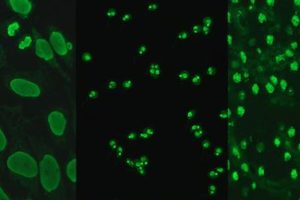university of melbourne
Despite damage, membrane protein structure can be seen using new X-ray technology, study reveals
Australian researchers have identified a way to measure the structure of membrane proteins despite being damaged when using X-ray Free-Electron Lasers (XFELs), a discovery that will help fast track the development of targeted drugs using emerging XF…
Australian overturns 15 years of nano-science doctrine
An Australian mathematician has thrown 15 years of accepted scientific practice out the window by discovering a design flaw in a key component of the Atomic Force Microscope. His finding will force a rethink into the design and use of an instrument that has become a cornerstone of scientific measurement and analysis. Dr John Sader, at University of Melbourne’s Department of Mathematics and Statistics, and Particulate Fluids Processing Centre, used established mechanical principles to prove that the popular V-shaped cantilever inadvertently degrades the performance of the instrument, and delivers none of its intended benefits.
New age for Mungo Man, new human history
A new study has finally got scientists to agree on the age of Mungo Man, Australia’s oldest human remains, and the consensus is he is 22,000 years younger. Mungo Man’s new age is 40,000 years. The research also boosted the age of Mungo Lady, the world’s first recorded cremation, by 10,000 years putting her at the same age as Mungo Man. It is the first time scientists have reached a broad agreement on the ages of the Lake Mungo remains.







